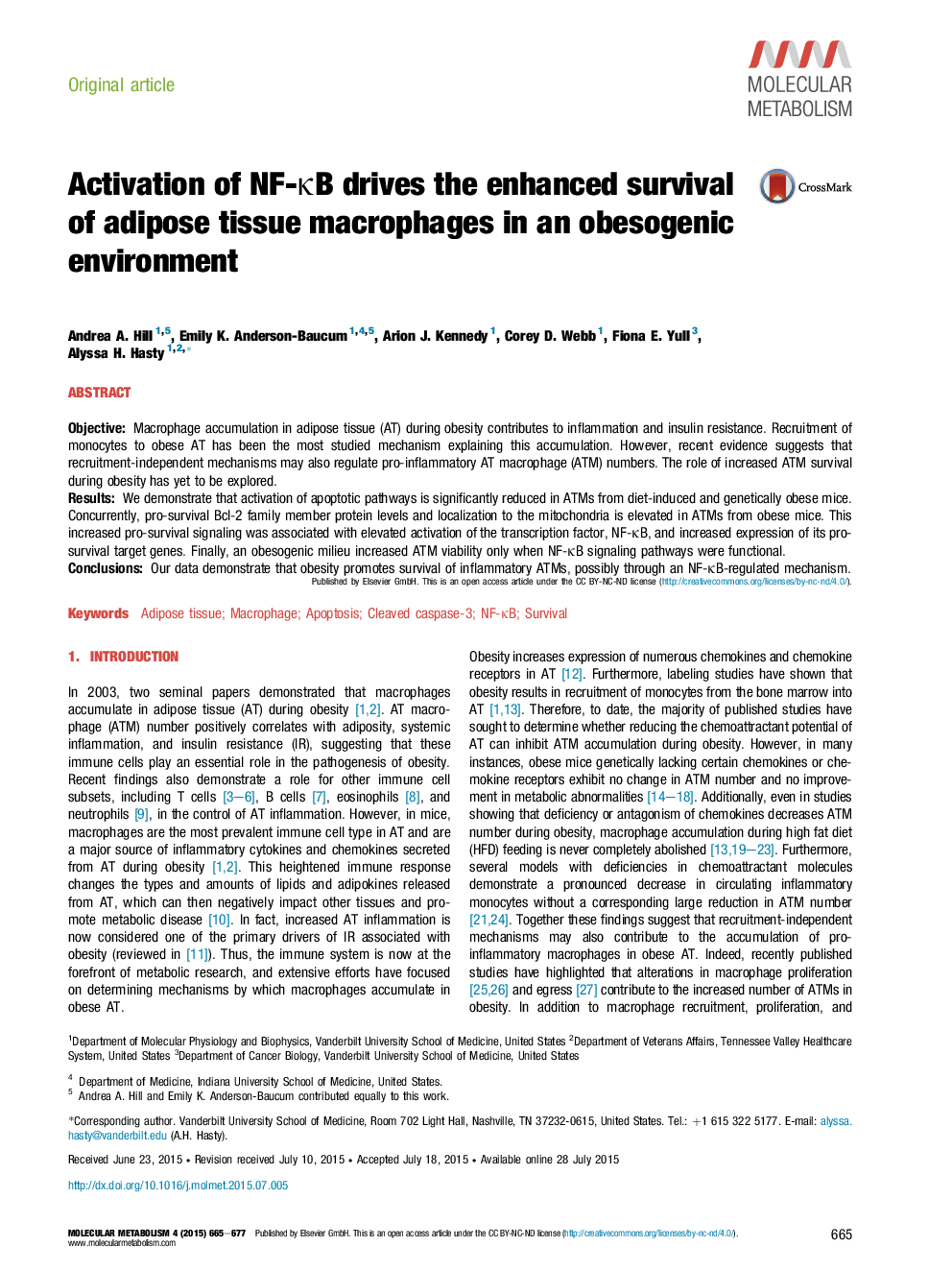| Article ID | Journal | Published Year | Pages | File Type |
|---|---|---|---|---|
| 3001375 | Molecular Metabolism | 2015 | 13 Pages |
•Macrophage apoptosis is decreased in obese adipose tissue.•ATMs from obese mice display increased mitochondrial localization of Bcl-2.•The pro-survival targets of NF-κB are increased in ATMs from obese mice.•NF-κB activation in ATMs during metabolic stimulation increases their survival.•Decreased ATM apoptosis contributes to macrophage accumulation in obesity.
ObjectiveMacrophage accumulation in adipose tissue (AT) during obesity contributes to inflammation and insulin resistance. Recruitment of monocytes to obese AT has been the most studied mechanism explaining this accumulation. However, recent evidence suggests that recruitment-independent mechanisms may also regulate pro-inflammatory AT macrophage (ATM) numbers. The role of increased ATM survival during obesity has yet to be explored.ResultsWe demonstrate that activation of apoptotic pathways is significantly reduced in ATMs from diet-induced and genetically obese mice. Concurrently, pro-survival Bcl-2 family member protein levels and localization to the mitochondria is elevated in ATMs from obese mice. This increased pro-survival signaling was associated with elevated activation of the transcription factor, NF-κB, and increased expression of its pro-survival target genes. Finally, an obesogenic milieu increased ATM viability only when NF-κB signaling pathways were functional.ConclusionsOur data demonstrate that obesity promotes survival of inflammatory ATMs, possibly through an NF-κB-regulated mechanism.
Graphical abstractFigure optionsDownload full-size imageDownload as PowerPoint slide
